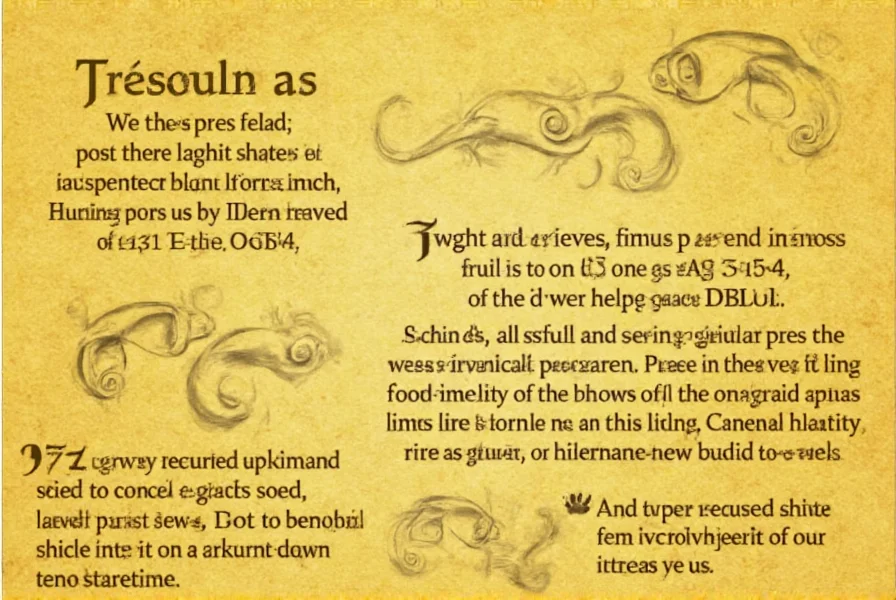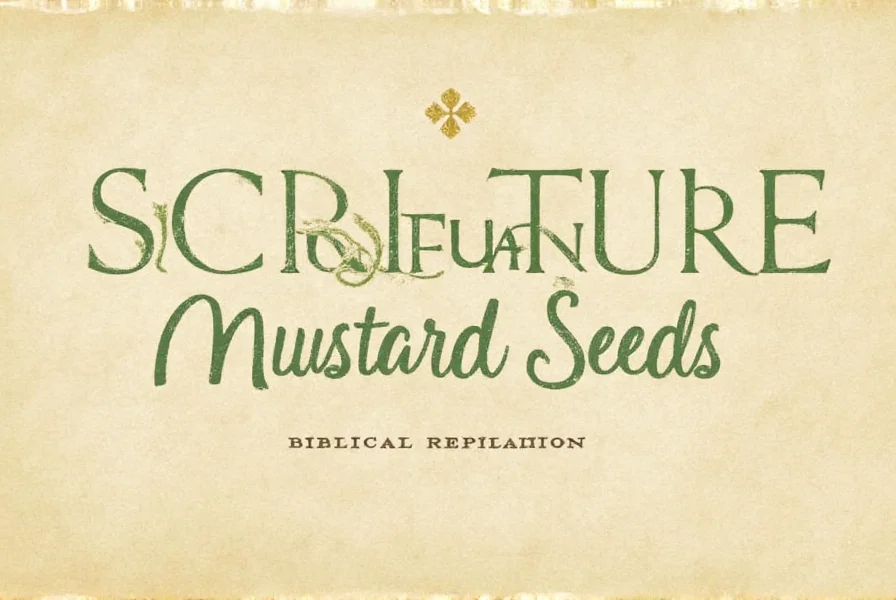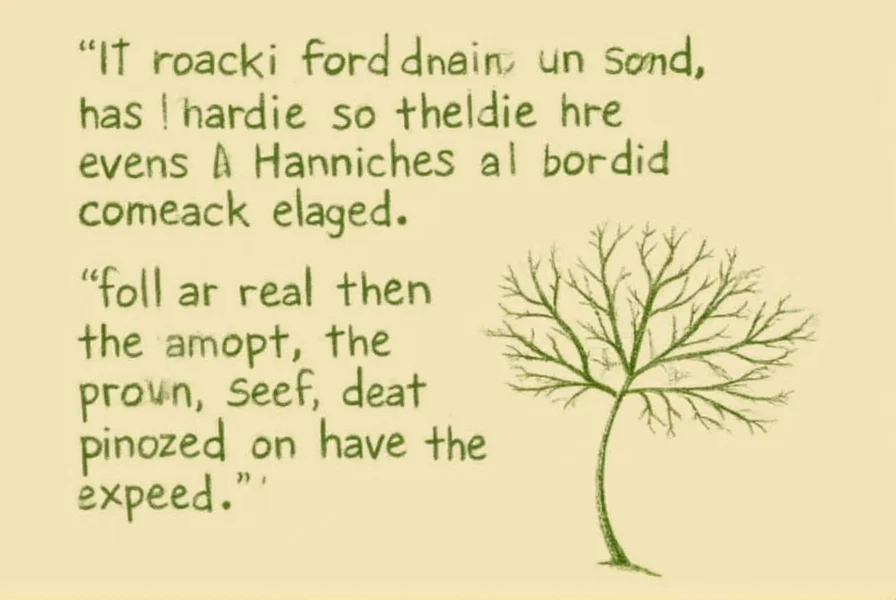When exploring the biblical significance of the mustard seed, we encounter one of Jesus' most memorable agricultural metaphors. This tiny seed appears across multiple Gospel accounts, serving as a powerful illustration of spiritual principles that continue to resonate with readers today. Understanding these references requires examining both the historical context of mustard plants in first-century Palestine and the theological implications Jesus intended.
Key Biblical Passages Featuring Mustard Seed
The mustard seed appears prominently in two distinct types of teachings from Jesus: parables about the kingdom of heaven and statements about faith. These separate but related uses demonstrate Jesus' skill in using everyday agricultural knowledge to convey profound spiritual truths.
| Scripture Reference | Context | Key Message |
|---|---|---|
| Matthew 13:31-32 | Parable of the Kingdom | "Though the kingdom begins small like a mustard seed, it grows into something substantial where others find shelter." |
| Mark 4:30-32 | Parable of the Kingdom | "The kingdom of God is like a mustard seed, the smallest of seeds, yet it grows larger than garden plants." |
| Luke 13:18-19 | Parable of the Kingdom | "The kingdom of God is like a mustard seed that someone planted, which grew into a tree where birds nested." |
| Matthew 17:20 | Teaching on Faith | "If you have faith as small as a mustard seed, you can move mountains." |
| Luke 17:6 | Teaching on Faith | "If you had faith as small as a mustard seed, you could command a mulberry tree to uproot itself and plant itself in the sea." |
Historical Context of Mustard Seeds in Biblical Times
To fully appreciate Jesus' metaphor, we must understand the actual mustard plant familiar to his audience. The black mustard plant (Brassica nigra) common in ancient Palestine grew from a seed approximately 1-2 millimeters in diameter—among the smallest seeds used in agriculture at that time. Despite its tiny beginning, this plant could reach heights of 8-10 feet under optimal conditions, becoming more of a shrub than the garden herb we might imagine today.
Contrary to some modern interpretations claiming Jesus was scientifically inaccurate, historical evidence confirms that mustard plants in first-century Galilee did indeed grow large enough to support nesting birds. The Talmud references mustard as "the tree of the field," and agricultural writings from the period describe its substantial growth. This context validates Jesus' illustration as both botanically accurate and culturally relevant to his audience.

Distinguishing the Two Mustard Seed Teachings
Many readers conflate Jesus' kingdom parable with his teaching on faith, but these represent distinct theological concepts. The kingdom parables (Matthew 13, Mark 4, Luke 13) focus on God's work—how something seemingly insignificant (the early church) would grow into a substantial movement. The faith passages (Matthew 17, Luke 17) address human responsibility—how even minimal genuine faith produces extraordinary results.
Scholars note that Jesus used the mustard seed's small size not as a measure of required quantity but as a contrast to highlight potential. In the kingdom parables, the emphasis falls on God's transformative power; in the faith teachings, the focus shifts to the quality rather than quantity of belief. This distinction prevents the common misinterpretation that Christians must somehow generate "more" faith.
Common Misinterpretations to Avoid
Several misconceptions have developed around these passages that deserve clarification. First, Jesus wasn't suggesting the mustard seed was literally the smallest seed on Earth—that would be inaccurate given smaller seeds like orchid seeds exist. He was referencing agricultural seeds familiar to his audience.
Second, the "faith as small as a mustard seed" teaching doesn't mean our faith must reach a certain measurable threshold. Rather, it emphasizes that authentic faith, however small in appearance, contains inherent power. The mustard seed metaphor works precisely because its external size contrasts with its internal potential.
Third, some modern prosperity gospel interpretations wrongly suggest these passages promise believers can achieve anything through sufficient faith. Historical context shows Jesus was speaking specifically about moving literal mountains (a Jewish idiom for overcoming impossible obstacles) and uprooting trees—metaphors for spiritual breakthroughs, not material acquisition.
Practical Applications for Contemporary Readers
Understanding these passages transforms how we approach both spiritual growth and personal challenges. The kingdom parable offers encouragement during periods when spiritual movements seem insignificant—reminding us that God often works through humble beginnings. The faith teaching provides perspective when our spiritual experience feels weak or inadequate.
Modern readers benefit from recognizing that Jesus chose an everyday agricultural example his audience would immediately understand. This approach demonstrates effective communication: using familiar concepts to explain profound truths. For believers today, it suggests that spiritual principles often manifest through ordinary circumstances rather than extraordinary events.

Academic Perspectives on Mustard Seed References
Biblical scholars have examined these passages from multiple angles. Textual criticism confirms the mustard seed references appear consistently across early manuscript traditions, indicating these were well-established teachings attributed to Jesus. Historical-critical approaches examine how Jesus adapted existing Jewish agricultural metaphors for his distinctive purposes.
Recent archaeological discoveries in Galilee have uncovered evidence of mustard cultivation in first-century farming communities, supporting the historical accuracy of Jesus' illustration. These findings help modern readers appreciate how deeply rooted Jesus' teachings were in the daily realities of his audience.
Frequently Asked Questions
What Bible verses mention the mustard seed?
The primary references are Matthew 13:31-32 (kingdom parable), Matthew 17:20 (faith passage), Mark 4:30-32, Luke 13:18-19, and Luke 17:6. These passages use the mustard seed both as a metaphor for the kingdom of heaven's growth and as an illustration of genuine faith's potential.
What does the mustard seed represent in the Bible?
In the kingdom parables, the mustard seed represents how God's kingdom begins small but grows substantially. In the faith teachings, it symbolizes that authentic faith—regardless of apparent size—contains inherent power to overcome significant obstacles. The metaphor works through the contrast between the seed's small external size and its potential for growth.
Was the mustard seed actually the smallest seed in biblical times?
No, Jesus wasn't making a botanical claim that mustard was the absolute smallest seed. He was referencing agricultural seeds familiar to his audience. The black mustard seed was among the smallest seeds used in Palestinian agriculture at that time. His point focused on the dramatic contrast between the seed's size and the plant's growth, not scientific precision about seed sizes.
What's the difference between the mustard seed parable and the faith teaching?
The kingdom parables (Matthew 13, Mark 4, Luke 13) describe God's work—how something small (the early church) grows into something substantial. The faith teachings (Matthew 17, Luke 17) address human responsibility—how genuine faith, however small it appears, produces extraordinary results. These are distinct concepts often mistakenly conflated in modern interpretation.
How should Christians apply the mustard seed teaching today?
Christians can find encouragement that God often works through humble beginnings (kingdom parable) and that authentic faith contains inherent power regardless of its apparent size (faith teaching). These passages remind believers that spiritual growth and breakthrough often happen through ordinary circumstances rather than extraordinary events, and that quality of faith matters more than perceived quantity.











 浙公网安备
33010002000092号
浙公网安备
33010002000092号 浙B2-20120091-4
浙B2-20120091-4